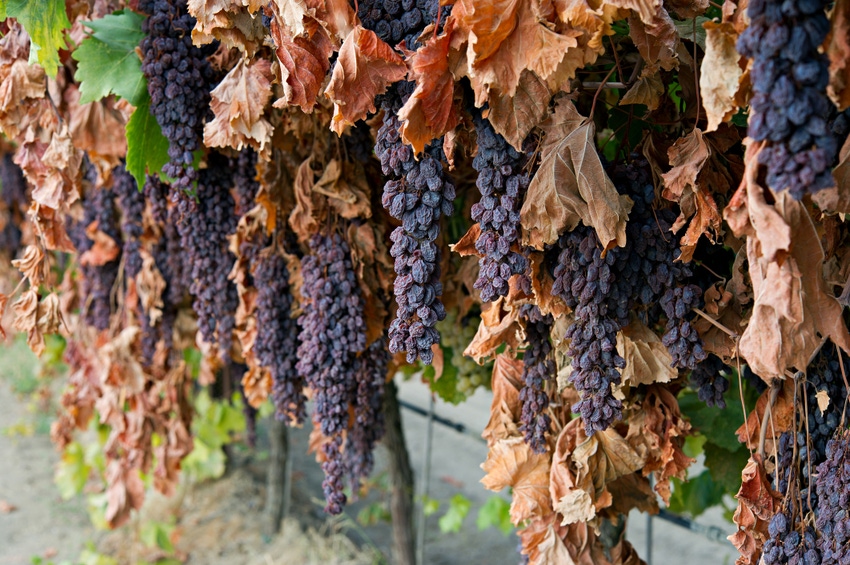
Raisin grower Jerry Rebensdorf, who is also president of Fresno Cooperative Raisin Growers, Inc., Fresno, Calif., is breathing a lot easier than he was last year when prices for the 2016 crop sunk to their lowest level in several decades – around $1,100 a ton.
“We’ve hit the bottom of the market,” he says. “We’re getting rid of all the excess tonnage and vineyard acreage and bringing supplies back in balance with demand.”
Rebensdorf points to several factors contributing to this.
For the first time in six years, he notes, packers are shipping more raisins to buyers here and overseas than in the previous year, whittling down inventories that had been depressing prices.
Imports of raisins from countries, such as Argentina, Chile and South Africa, continue to decline due to their smaller crops last year and low prices for California raisins.
And this spring’s unusually low bunch count – combined with fewer acres of bearing vines as growers keep replacing Thompson seedless vines with more profitable crops – signals a smaller California crop than last year.
So far, the raisin vineyards in his area are in good shape.
“They’re green and growing well,” he says. “They look nice. We’ve had plenty of water for irrigating the crop.”
This year, for example, growers in the Fresno Irrigation District began receiving surface water in mid-March, Rebensdorf notes. Water is expected to keep flowing in the canals into October.
That’s a marked improvement from the previous three years, when drought restricted deliveries to no more than a one- to four-month supply, depending on the year.
As in 2016, pressure on the raisin vineyards from the fungal disease, botrytis, has been low.
“There’s been very little of it this year,” Rebensdorf says. “Although we had some rains that can spread the virus by splashing it onto the canes, the weather would always dry out and turn hot. That helped keep the virus from spreading throughout the whole cane.”
He hasn’t seen as much powdery mildew in the raisin vineyards as last year. That may reflect lower pressure as well as diligent applications of sulfur and fungicide treatments, Rebensdorf adds.
As of early June, he had not heard of any major problems with mites. He was expecting those populations to start building around mid-June with the arrival of summer heat.
Meanwhile, the first hatch of leafhoppers ended in the first-half of June without posing much of a threat.
Like other California grape growers, Rebensdorf is concerned about the continuing spread of the vine mealybug. As with other grape-infesting mealybugs, the vine mealybug damages vines by producing honeydew that drops onto the bunches and other vine parts and serves as a substrate for black sooty mold
All or most life stages of the vine mealybug can be on a vine year-round, depending on the region. Only the nymph stage overwinters In the North Coast, where it can be found under the bark. However, in other regions during the winter, vine mealybug eggs, crawlers, nymphs, and adults are under the bark, within developing buds, and on roots, report University of California entomologists.
In the spring, vine mealybugs move from the roots or trunk to the cordons and canopy. By late spring and summer, they can infest all parts of the vine: hidden under bark and exposed on trunks, cordons, first- and second-year canes, leaves, clusters and roots.
“Outbreaks of the vine mealybug have been getting a little worse here every year,” he says. “More and more growers are having to spray to control it.”
As of early June, Rebensdorf had sprayed one of his non-organic raisin vineyards with a systemic insecticide.
At the same time he had already treated his organic vines twice with a bioinsecticide “This insect is difficult to control with organic materials,” he says. “I’m not sure how effective these treatments have been in the organic blocks.”
About the Author(s)
You May Also Like




